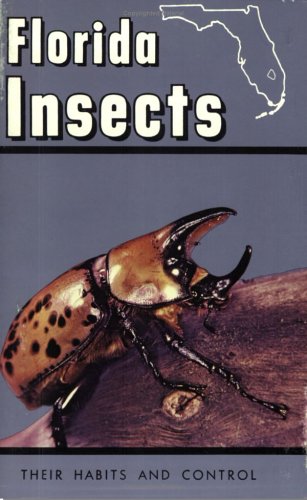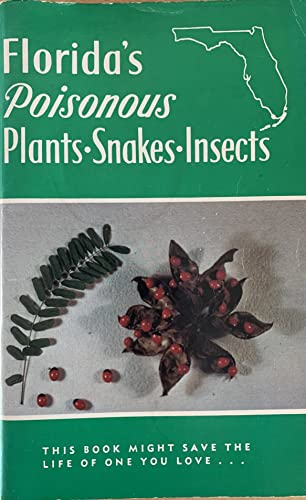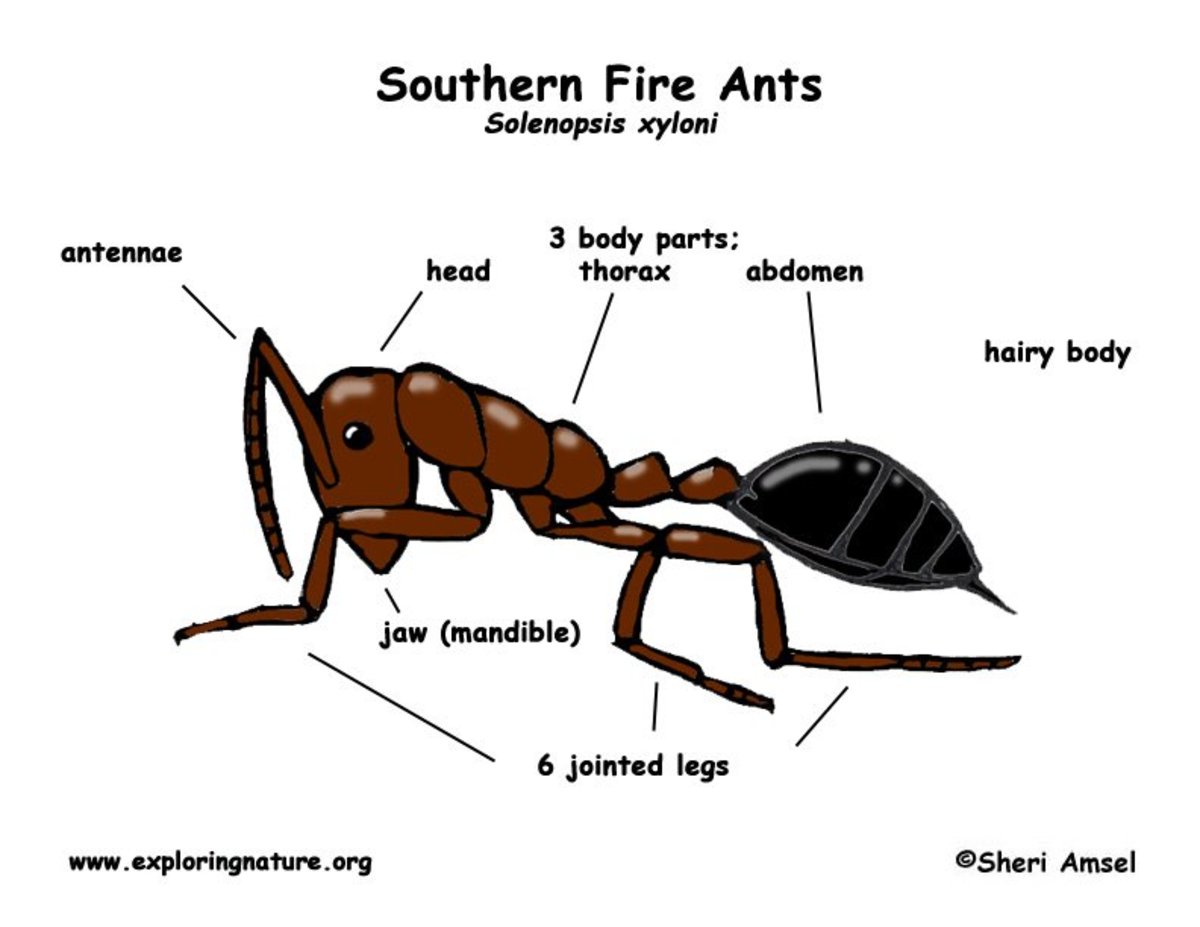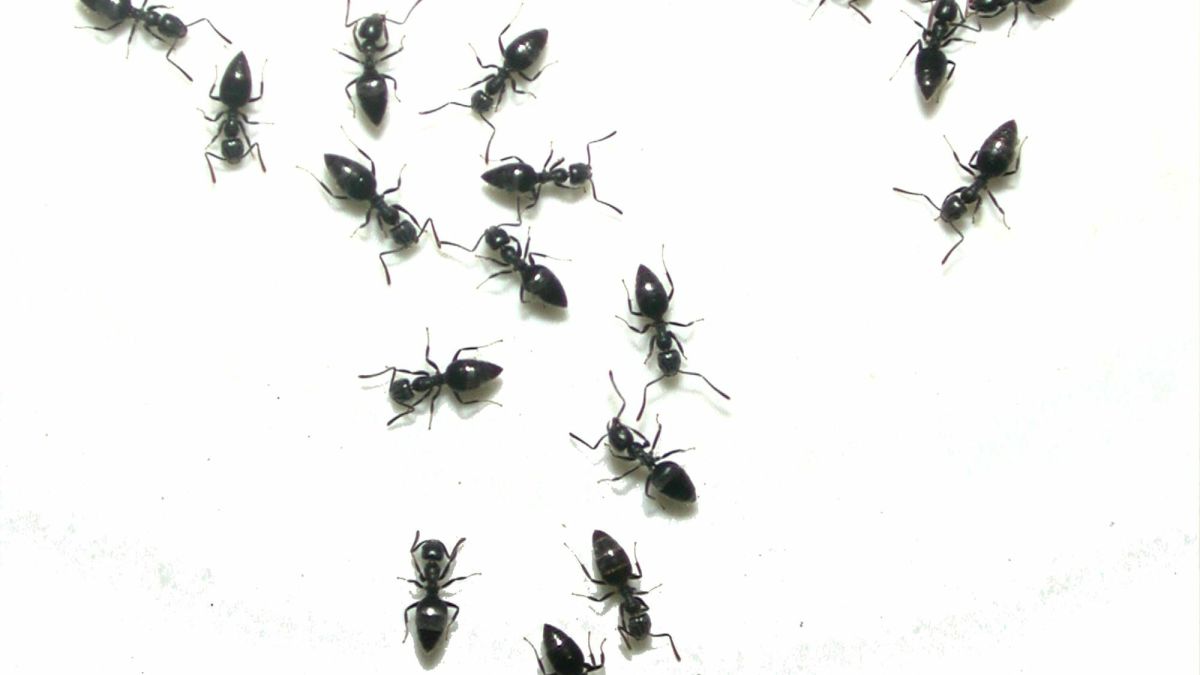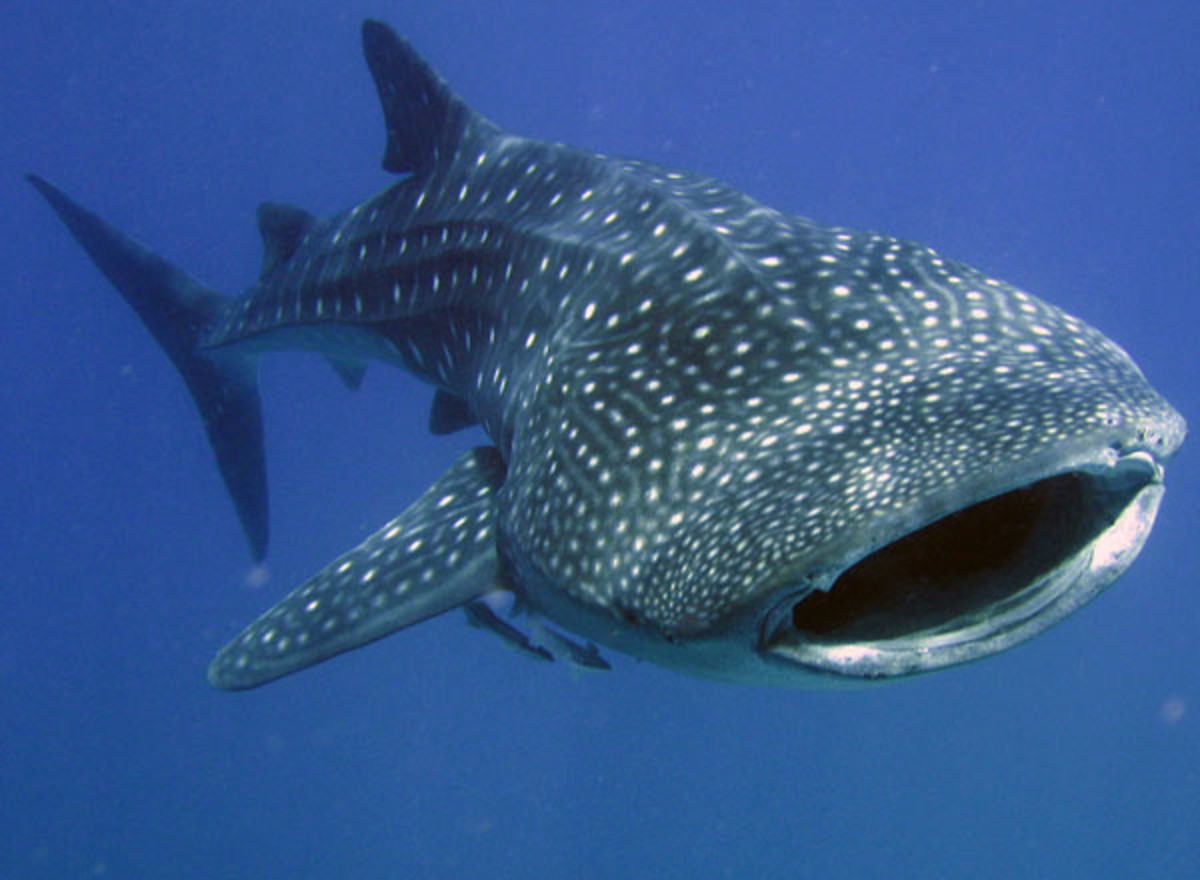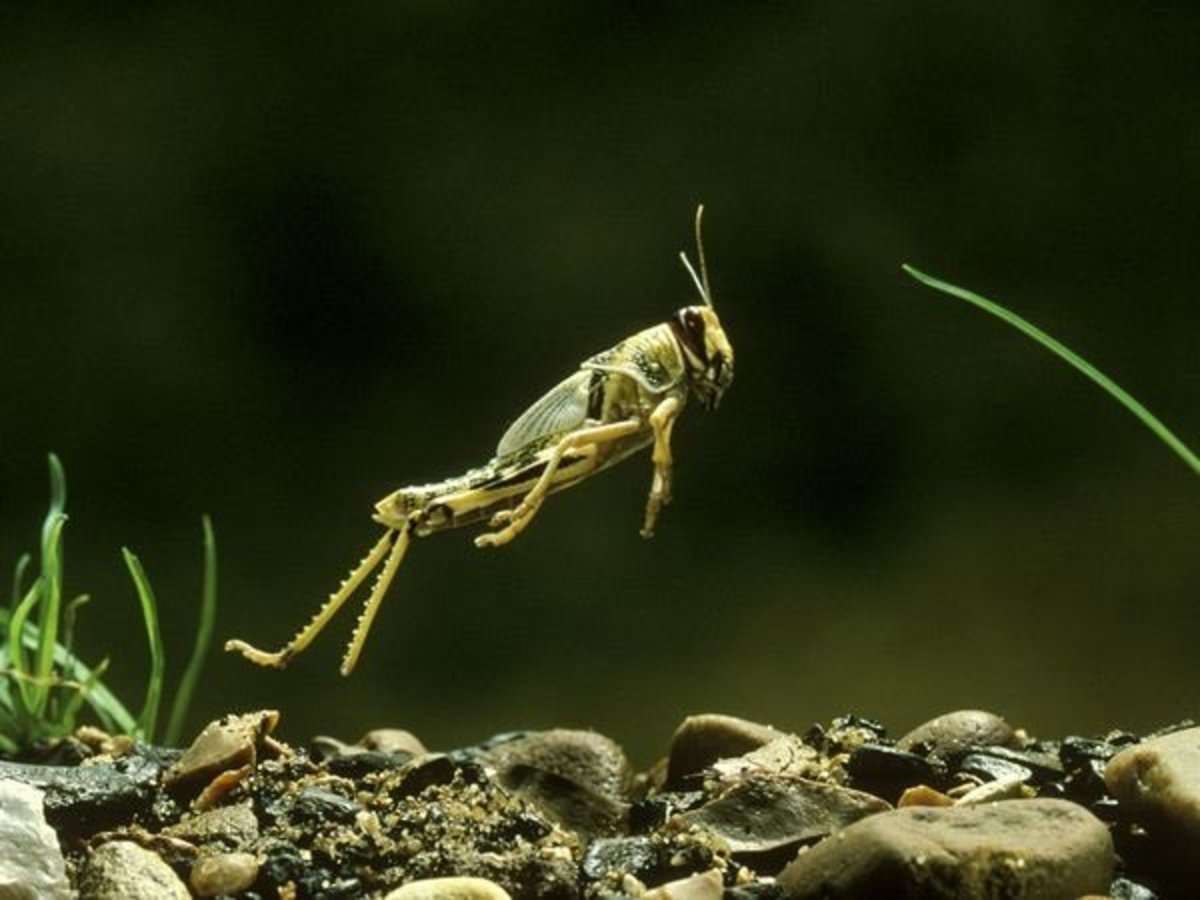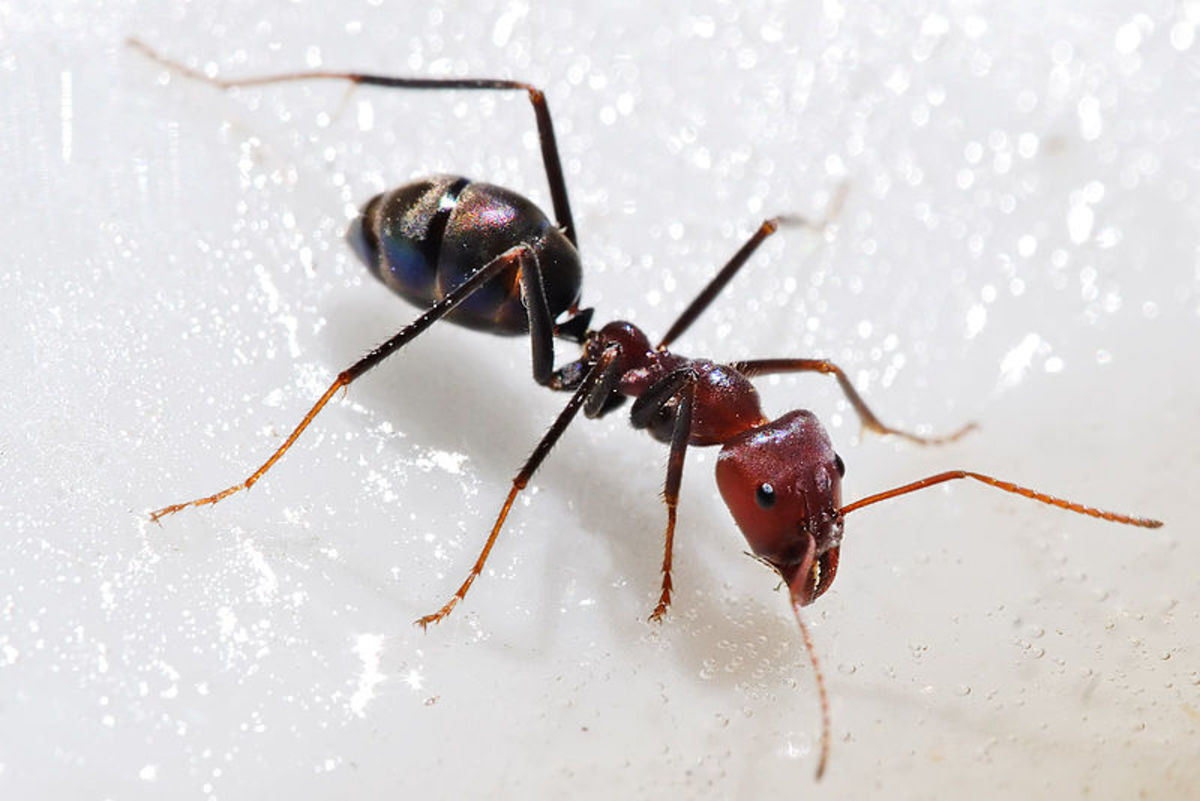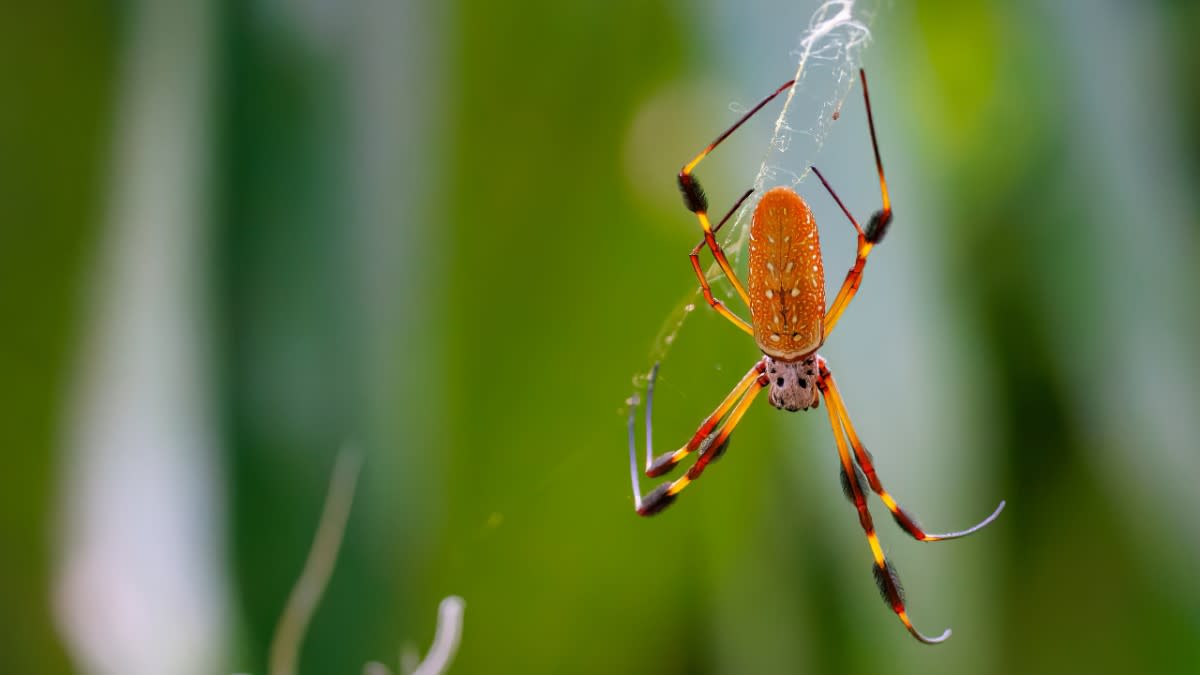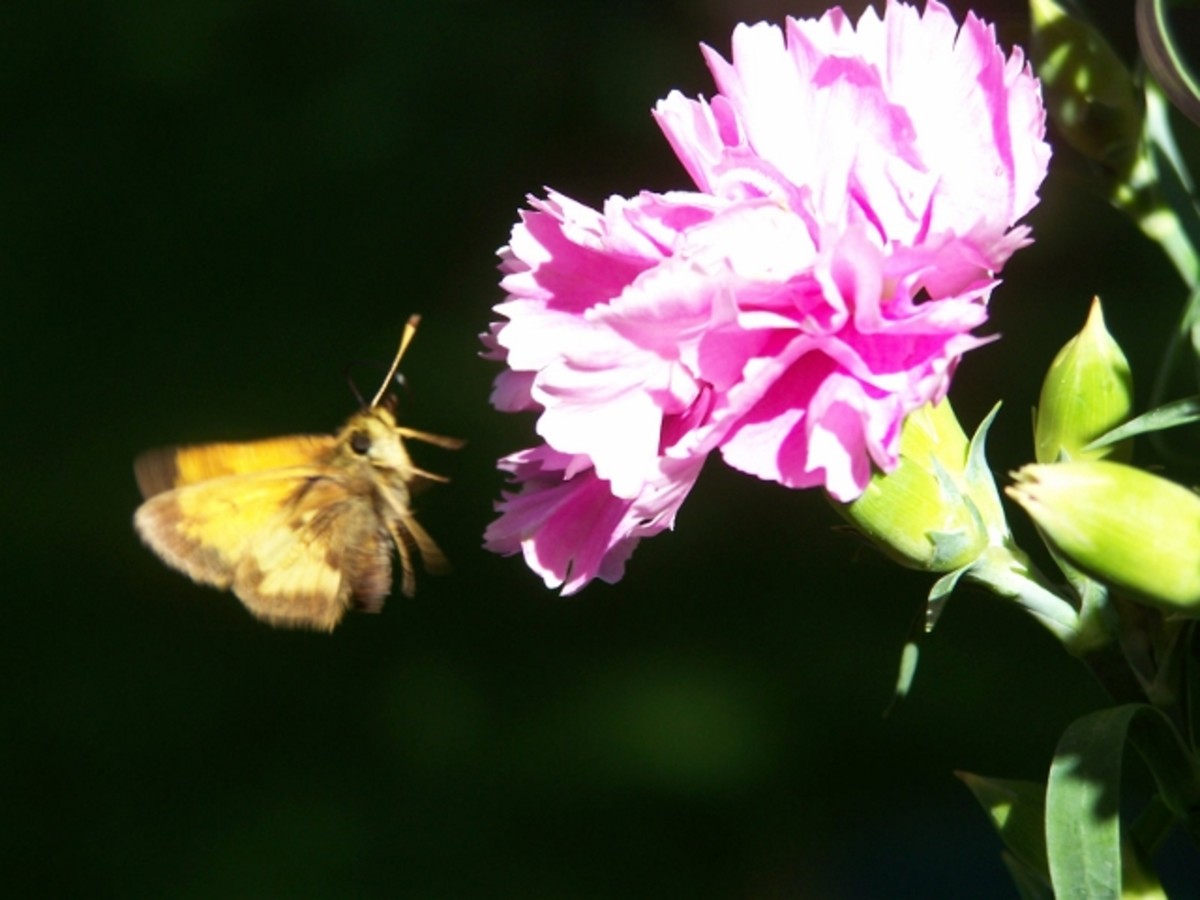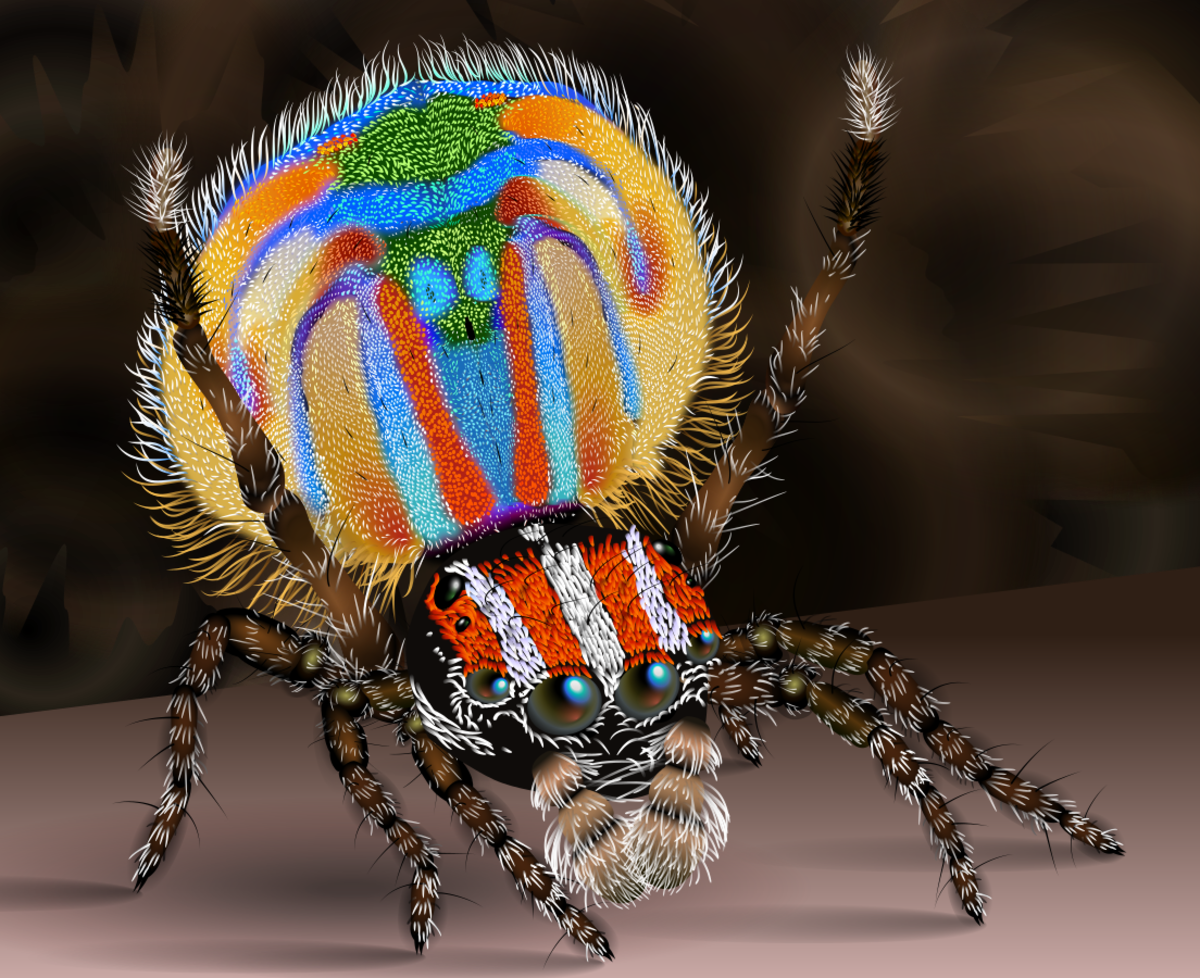Wild Florida - Creepy Crawly Creatures

There are well over 1 million known species of insects in the world, and some experts estimate that there might be as many as 10 million. This leaves 9 million to be discovered. We haven't even found them all yet let alone studied them. You want to squish, squash, spray and stomp on bugs but I think they're some of the most fascinating creatures on earth.
All photos copyright by Gillbert Henry
New Discoveries
New Discoveries happen all the time. As recent as 2002 an Entomologist Oliver Zompro from Germany discovered an entirely new insect order.
Science in Africa magazine reports " The recent recognition of a new order of insects, Mantophasmatodea, has been dubbed as "one of the most exciting" recent discoveries in Zoology, boosting the total number of insect orders to 30. The formal description by entomologists of the fairly large, wingless creatures, which to the untrained eye resembles a cross between a grasshopper and a praying mantis, is the first description of an insect order since the discovery of ice crawlers (Grylloblattodea) in 1914, almost a century ago."
Underlined reference links can be found at the end of this article
A few interesting facts
- 80% of the world's food crops are pollinated by insects.
- The main food of mosquitoes is nectar from flowers, not blood. Blood is needed by females for its protein, which helps the female lay its eggs.
- An insect has no lungs. They take air in through special openings called spiracles or directly through their skin. This is done by diffusion. (Diffisuion: The movement of oxygen from an area of high concentraion to one of lower concentration. In other words things sort of spread out to fill up the space like Kool Aide in a glass of water.) Diffusion works best over small distances which is one of the reasons insects are small.
- A mosquito beats it wings up to 600 times a second.
- One out of every four animals on earth is an insect.
- Painted Lady butterflies migrate 3,000 miles from Africa to England.
- Dragonflies have as many as 30,000 lenses in each eye
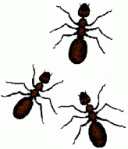
The Wonderful Ant
Ants
Florida has the Fire Ant. These are small, red and mean. They are very quick to bite and sting anything they can.
Ants can lift 20 times their own body weight.
Ants live between 46 to 60 days.
Adult ants cannot chew and swallow solid food. They eat juice which they squeeze from pieces of food.
There are over 10000 known species of ants.
Ants have two stomachs. One to hold food they eat and the other to hold food for other ants.
If an ant finds a good food source it will leave a trail of scent so that the other ants in the colony can find the food.
Some birds put ants in their feathers because the ants squirt formic acid which gets rid of parasites.
Some ants grow gardens underground for food.
Some ants "herd" aphids and milk them for nector like food.
Ants will build "water traps" in their homes to keep out rain.
The Fire Ant
Small, red and mean. There isn't anything good to say about Fire Ants. They both bite and sting. The sting is very irritating and, for people allergic to it, dangerous. They have large loose mounds. The soil has the texture of sand. When you accidentally step on it or bother the ants they'll bite and sting you. They'll also tell all their friends and you'll have hundreds of these small red ants all over you. FloridaEnvironment.com has great articles about Fire Ants and what we are doing to control them. Don't let them fool you with the comment "short term affects". The sting is very painful and the irritation lasts for several days. The welt can stay for a week or more.
We can offer a couple rules to follow if your in Florida. Never ever leave soda or other food in your car. You can't believe how fast ants can find it. Carry a can of Wasp spray in your car. The ants can and do sometimes build a nest inside your car. And they can do it rather quickly. If you see an ant mound destroy it. Fire Ants travel and make subdivisions.
Fire Ants affect our native species. Besides taking over local spiders and other ants who are beneficial they'll also affect larger animals such as ground nesting birds. Fire Ants have no natural predator here in the U.S. so the government has obtained a small fly from South America that lays it's eggs in Fire Ants. This kills the Fire Ants.
Featured Creatures, an article written by Laura Collins and Rudolf H. Scheffrahn of the University of Florida is full of information about the fire ant. They tell us that "The diet of foraging workers consists of dead animals, including insects, earthworms, and vertebrates. Workers also collect honeydew and will forage for sweets, proteins, and fats in homes. They are sometimes attracted to piles of dirty laundry." They also tell us that "The sting possesses venom of an alkaloid nature, which exhibits potent necrotoxic activity. Approximately 95% of the venom is composed of these alkaloids, which are responsible for both the pain and white pustule that appears approximately one day after the sting occurs. The remainder of the venom contains an aqueous solution of proteins, peptides, and other small molecules that produce the allergic reaction in hypersensitive individuals." There is a photo of the pustules that these ants stings produce. There is a lot more in this article that anyone interested in Fire Ants whould want to know.
Paper Wasps
Paper wasps gather fibers from deadwood and plant stems, (Here one is collecting fibers from the boards of the boardwalk at Wakodahatchee Wetlands). They mix this with saliva and use the mixture to construct water-resistant nests made of gray or brown papery material. Paper wasps secrete a chemical which repels ants. They spread this around the base of the nest anchor to keep ants from the young.
Paper wasps are not aggressive and attack only if they feel they or their nests are threatened. These wasps are very beneficial as they eat insect pests. I once watched a fly cross in front of me. As it did so a wasp swooped down, grabbed the fly, took it to the top of the garage door, stung it several times and then proceeded to eat it. As I was being swarmed by hoards of flies that summer I was very appreciative of the wasps efforts and to this day I have never killed another wasp.
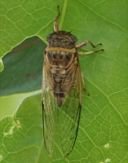
Cicadas
Male Cicadas have sound producing organs below the base of their abdomens. Some people call these insects locusts but Cicadas don't jump. Each species has its own song which can be a loud buzz or pulsing clacking. Some species have life cycles of 13 or 17 years though the most common nymph stage is 1 to 3 years. Most of the time is spent underground in the nymph state eating roots of trees that they later climb as adults.
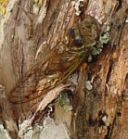
The earliest known cicada was found in a fossil that is 65 million years old, dating back to the time of dinosaurs in the Cretaceous Period. Cicadas can sing as loud as 91 decibels. A jet airplane flying overhead is between 70 and 80 decibels.
Cicada's are very good at camouflage.

Southeastern Lubber Grasshopper
The Lubber Grasshopper, at 4 1/2 to 5 1/2 inches is a large insect. These grasshoppers have two different color forms. One is dull straw-yellow with black markings and the other has a reddish stripe on the fore wing. The last occurs in the south and is the one pictured here. These grasshoppers are slow moving and cannot fly. It has spiny hind tibiae (The fourth division of an insect's leg) that can cut human skin.
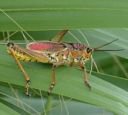
Their bright color pattern is a warning to predators that they contain toxic substances. I can't find where these grasshoppers are toxic to humans though. They are large and very beautiful!
You can find them gathered in large numbers covering bushes and plants.
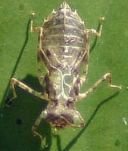
Dragonfly Nymph
These are the teenage form of the dragonfly before it transforms into an adult. They can inflict a sharp bite if held carelessly. They live on plants, leaf litter, or at the bottom of ponds or slow-flowing rivers. Dragonfly Nymphs are predators and feed mostly on other insects in the water. Sometimes, they can be cannibals and eat each other. Some of the larger species have been known to feed on small fish and tadpoles. Much of a dragonfly's life is spent in the larval stage where it molts six to 15 times. The nymph crawls out of the water and moults one last time, emerging as an adult with functional wings. They keep the populations of mosquitoes and flies under control.
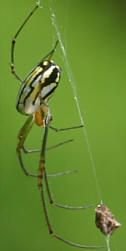
Mabel Orchard Spider
The Mabel Orchard Spider lives in woodland edges and shrubby meadows from New England to Florida and west to Texas and Nebraska. They eat small insects. They build an almost horizontal web with widely spaced spiral strands in shrugs or trees. The spider hangs below it's web or waits on a branch near by with one leg touching a strand of the web until prey is detected.
Orchard Spider Video
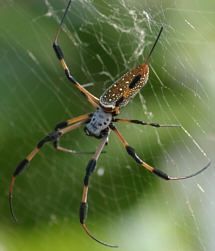
Golden Silk Spider
The female Golden Silk Spider can be up to 1 inch with the male much smaller at 1/8 inch. Add legs to it's size and this is a very large impressive spider. This is a female with the smaller male in the photo to the right.
This spider lives in shaded wood lands and swamps in the southeastern states. It eats mostly flying insects. It builds a large web that can be anywhere from 2 to 3 feet large. Often these webs will span across paths and roads.
The Golden Silk Spider hangs head downward from the under side of the web near the center. The spider repairs the web daily but only replaces halve at a time.
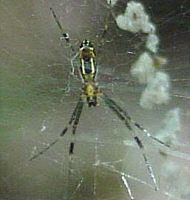
Black & Yellow Agriope
The male Black & Yellow Argiope is 1/4 to 3/8 inch large while the female is a bit larger at 3/4 to 1 1/8 inch. These spiders live among shrubs, tall plants and flowers in meadows and gardens in sunny areas with little or no wind. They are found throughout the states and in southern Canada. They eat small flying insects. They build a vertical web.
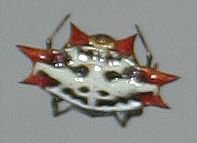
Crablike Spiny Orb Weaver
The Crab Spider is found across the southern part of the United States from California to Florida, as well as in Central America, Jamaica, Cuba, Dominican Republic, South America and certain islands in the Bahamas. It lives in woodland edges and shrubby gardens. Many of the studies on this spider have taken place in citrus groves in Florida. They frequently live in trees or around trees in shrubs. They are very beneficial spiders. This spider adds little tufts of silk to its web but no one really knows why.
Crab Spider buiding it's web
This spider is adding the little tuffs of webbing to one of the strands in the web. They build beautiful webs.
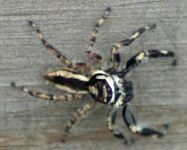
Fishing Spider
The Fishing Spider is a large spider that lives near water. It can dive and remain under water for up to 45 minutes. They can also skate across the water. They have excellent vision. They eat insects, small fish and tadpoles.
I believe this is a Fishing Spider. I found many descriptions and spiders that were very close to this one with the Six Spotted Fishing Spider being the closest but I have not found this exact spider. If someone knows what this spider is please let us know.
Stinging Caterpillars
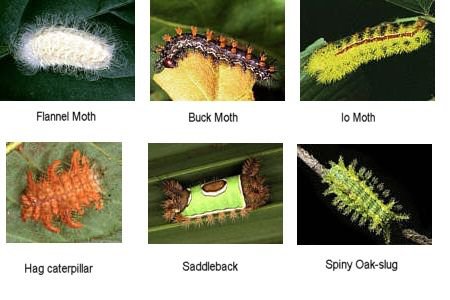
Several species of caterpillars have irritating hairs or bristles covered with poison. These are more dangerous than the scorpion. Touching them can result in welts, severe stinging pain, swelling and sometimes even your entire arm may swell. The Florida Poison Control Center suggests you use adhesive tape to pull out any stinging hairs, clean the area, use a cool compress and elevate the area for 24 hours. Also, call the doctor for information and advise. Go to the emergency room if you have any adverse reactions.
The Puss Caterpillar - Florida's Bad Boy

From all that I can find on poisonous caterpillars the Puss caterpillars is our bad boy! From a medical article concerning symptoms a Miami man developed after pruning trees comes the following statement: "The puss caterpillar (Megalopyge opercularis) is 1 of more than 50 types of caterpillars found in the United States that are poisonous and it is considered among the most dangerous." This unfortunate man never knew he had been stung.
In Florida there are two generations a year, one in spring and the other in fall. Please be careful of this caterpillar.
Great books from Amazon
Unknown Bug

I have no idea what this bug is. The piece of wood you see in the photo on the left is a toothpick.
Another Unknown Bug
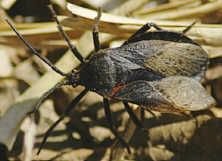
There is so much I don't know about bugs and information is not easy to find. If anyone knows what these creatures are please let me know.
And yet another unknown bug.
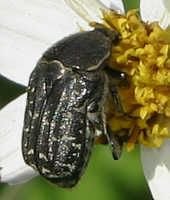
You could spend a lifetime trying to figure these things out. Good bug, bad bugs, who knows what bugs. They're fascinating.
Aren't bugs great? Tell me about your favorite ones or just drop me a line to let me know what you thought of this lens. I'd love to hear from you.



